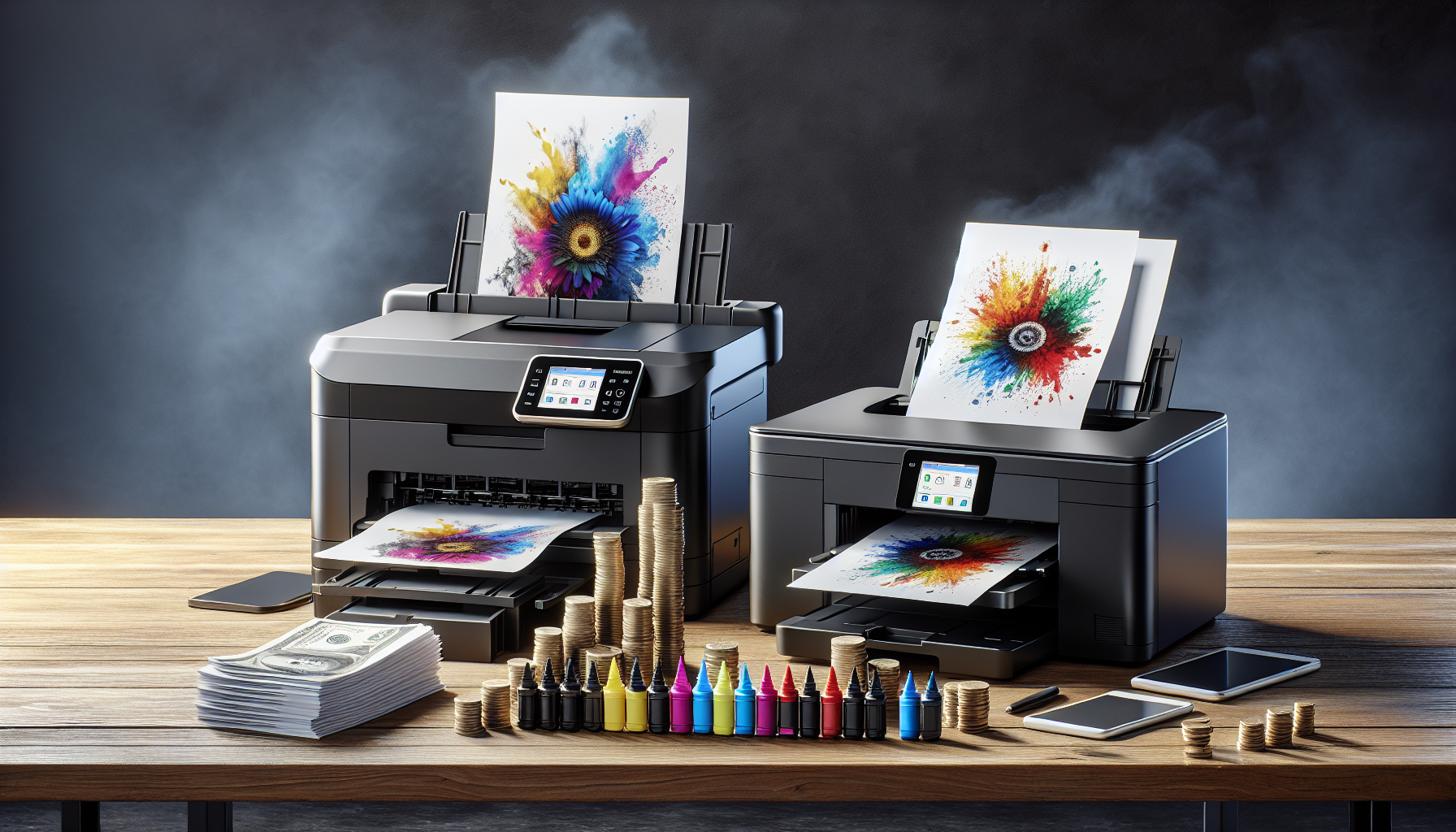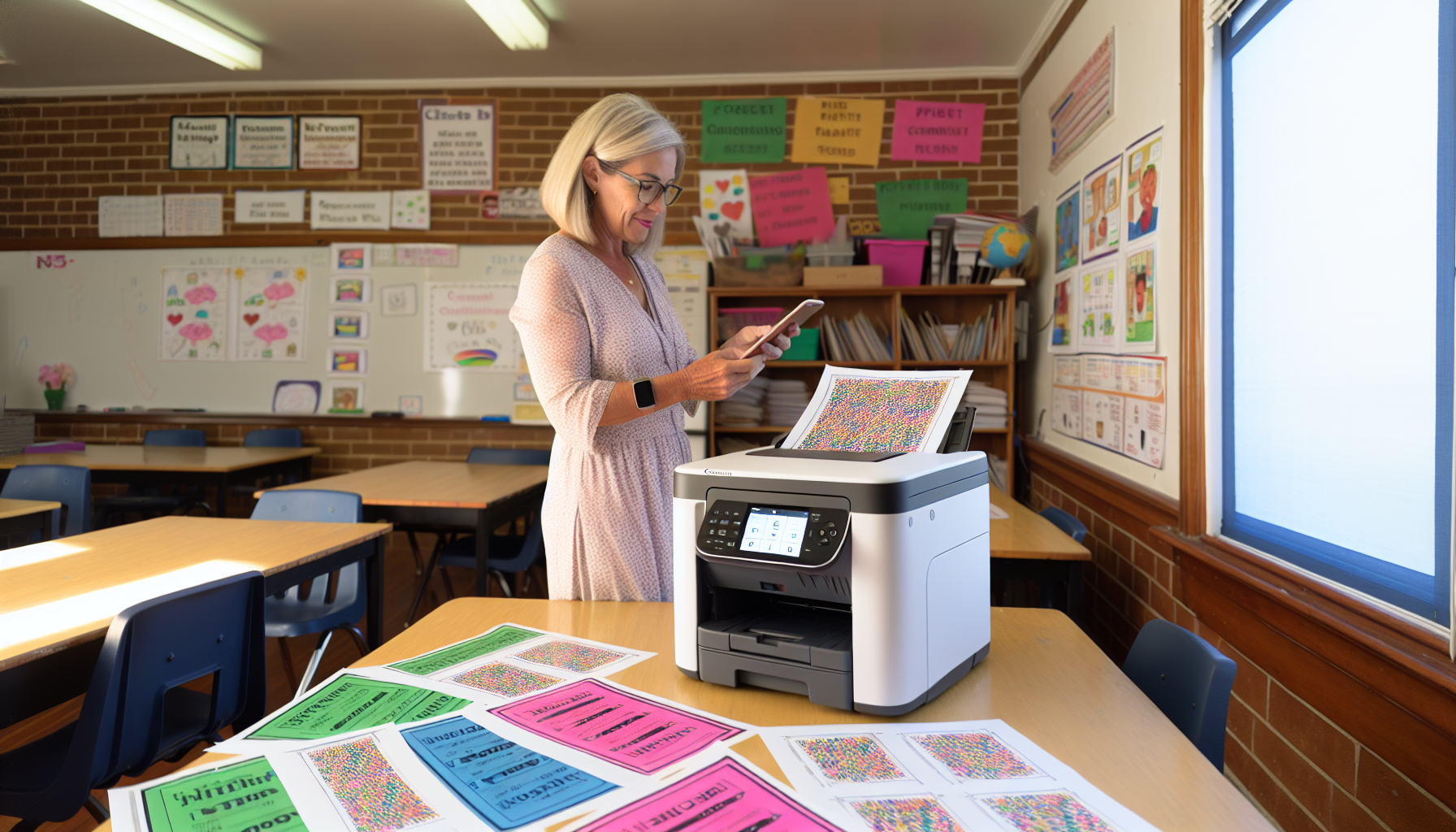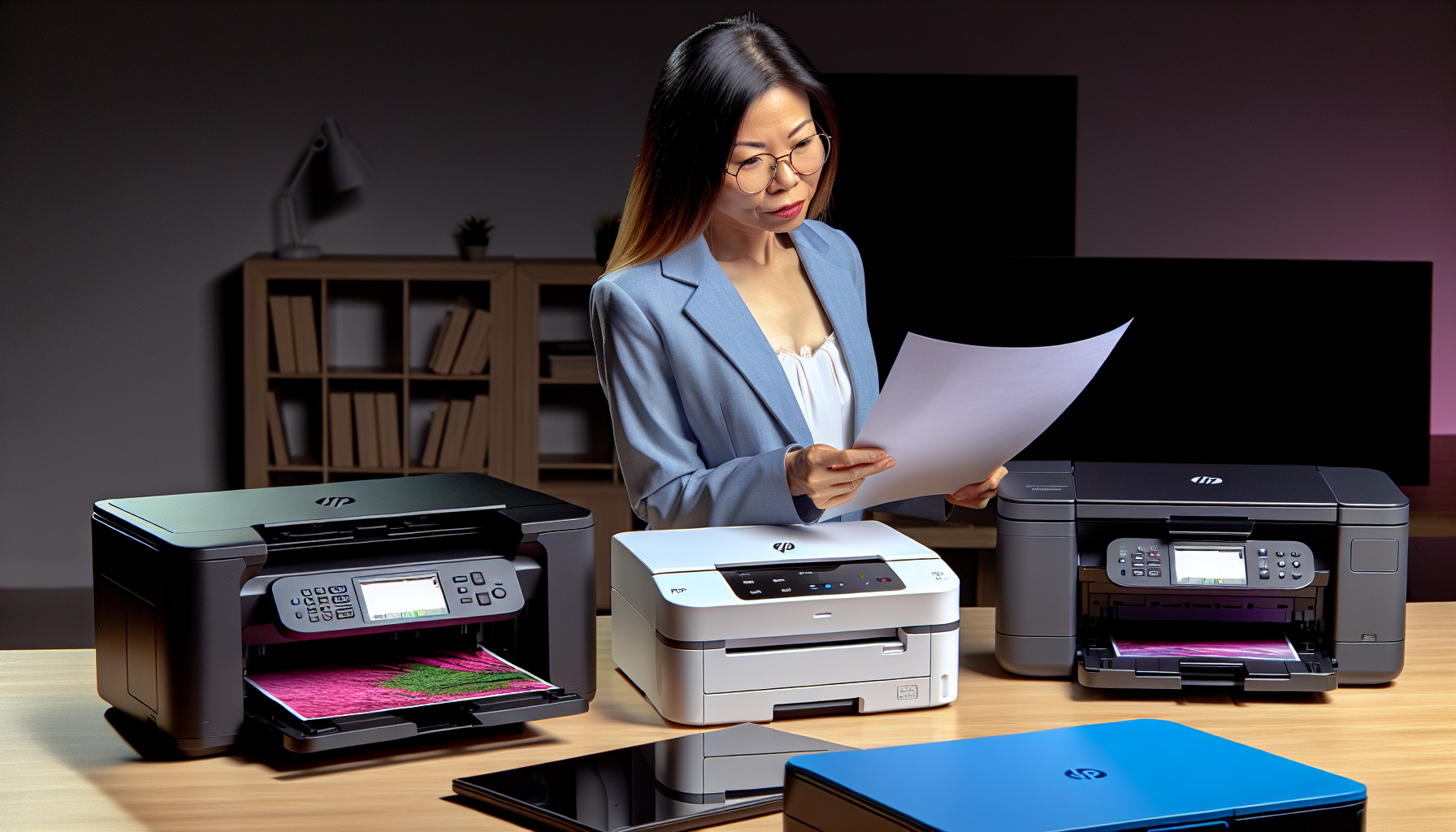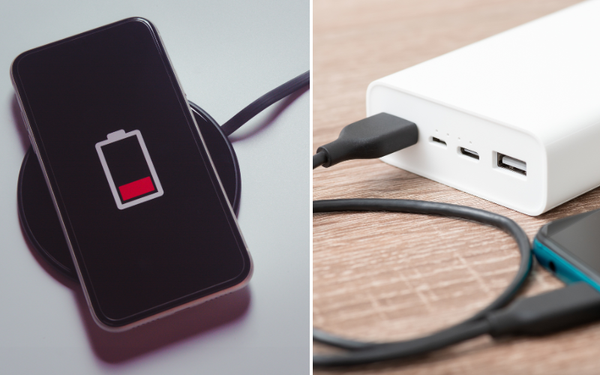If you’re a teacher pondering over the decision to buy a printer, you’re not alone. Should I buy a printer as a teacher? The answer hinges on balancing the ease of printing customized materials on-demand with the costs involved. This guide strips down the essentials, helping you understand if a personal printer meets your educational goals without straining your budget.
Key Takeaways
- A reliable printer in the classroom offers immediate customization of educational materials, aids students with learning disabilities with color printing, and supports teaching flexibility.
- Inkjet printers are suited for high-quality color output and simple management, while laser printers are known for their durability and long-term cost-efficiency, useful for prolonged classroom use.
- Essential classroom printer features include high-quality color output, wireless connectivity for flexible printing options, and automatic duplex printing to save paper, with HP OfficeJet Pro, Canon PIXMA TR, Epson EcoTank, and Brother HL-L2300D as top recommended models.
The Importance of a Printer for Teachers

A reliable on-site printer equips teachers with the flexibility to:
- promptly customize educational materials according to their students’ needs
- print worksheets, handouts, and other resources as needed
- create personalized materials for individual students
- make last-minute adjustments to lesson plans
- print out student work for immediate feedback
Such flexibility becomes indispensable in the dynamic environment of a classroom where each day brings a unique set of challenges.
Color printing, in particular, can significantly help students with learning disabilities by making learning materials more accessible and easier to understand. School printers have the ability to cultivate creativity and ignite curiosity in students by generating compelling, visually attractive educational aids. These materials can be used to foster critical thinking and problem-solving skills in students by presenting academic subjects in an engaging and visual manner.
Types of Printers: Inkjet vs. Laser Printers

Inkjet and laser printers are the two main types of printers available on the market. While both types have their advantages, your choice between them should be based on your specific classroom needs.
Inkjet Printers
Inkjet printers, typically inexpensive, pose an affordable option for teachers and academic institutions. Inkjet printers excel at producing fine and smooth details with high-quality output, and are excellent for printing vivid color and pictures, ideal for creating engaging visual classroom materials.
These user-friendly printers offer:
- An uncomplicated printing process
- Easy management, a necessity in the bustling environment of a school
- Reasonably fast printing speeds
- No need for time to warm up, which suits moderate workloads in classroom settings.
Laser Printers
Renowned for their durability, laser printers make a dependable choice for prolonged classroom use. As a reliable printer, the non-printing effects of laser printers do not change over time, offering consistency in performance.
Despite their higher initial investment cost, laser printers can be more cost-efficient over time compared to inkjet printers. They often have a lifespan of up to 5 years, outlasting the average inkjet printer lifespan of 3 years.
Essential Features to Look for in a Classroom Printer

High-quality color printing is a crucial feature to consider when choosing a printer for the classroom. It offers several benefits, including:
- Enhancing student engagement
- Supporting creativity
- Helping in retention of material
- Improving learning outcomes due to its intuitive and absorbable nature for digital natives.
Wireless connectivity features, such as WiFi, are beneficial for enabling mobile printing with a wireless printer, allowing for greater flexibility and ease of use in the classroom. Meanwhile, automatic duplex printing is a feature that not only maximizes the efficiency of a classroom printer by saving time but also conserves resources by minimizing paper usage.
Top Printer Picks for Teachers

Given the multitude of options available, choosing the best printer for your classroom can seem overwhelming. To narrow down your choices, here are some top printer picks for teachers:
- HP OfficeJet Pro series
- Canon PIXMA TR series
- Epson EcoTank series
- Brother HL-L2300D
HP OfficeJet Pro Series
Offering a variety of models, the HP OfficeJet Pro series boasts features such as an automatic document feeder, competitive ink maintenance costs, swift print speeds up to 20.66 PPM, and sophisticated connectivity options like built-in Ethernet, wireless networking, and Wi-Fi Direct.
The HP OfficeJet Pro has been recognized by The Wirecutter as the ‘Best All In One Printer’ and praised for being exceptionally easy to set up.
Upon purchase of an HP OfficeJet Pro series printer, customers receive a prepaid value card for an initial number of months of HP Instant Ink service, based on the chosen plan. Models such as the HP OfficeJet Pro 8720 Series are compatible with HP Instant Ink, providing benefits that include high-speed printing and wireless connectivity, features which are valuable for teachers.
Canon PIXMA TR Series
Teachers can benefit from the cost-effective printer options provided by the Canon PIXMA TR series. For instance, the Canon PIXMA TR7020a is priced at $99.99. It offers multifunctional capabilities including printing, copying, and scanning, along with wireless connectivity and the ability to use voice commands for printing from anywhere.
The printers provide efficient printing speed, with the TR7020a offering 13 ipm for black prints and 6.8 ipm for color, and the TR8620a offering 15 ppm for black and white documents and 10 ppm for colored images. Both the PIXMA TR7020a and TR8620a have a 200-sheet paper capacity, convenient for handling busy classroom printing requirements.
Epson EcoTank Series
The Epson EcoTank series, designed specifically for regular classroom usage, offers convenient features like cartridge-free printing and easy-to-refill tanks. The Epson EcoTank ET-3760 provides a monochromatic print speed of 15 ppm and a color print speed of 8 ppm.
The EcoTank ET-2800 model caters to several classroom needs with its ability to print, copy, and scan, and it has a respectable print speed of 10 ppm for black and 5 ppm for color, along with a 100-sheet rear paper tray capacity.
Brother HL-L2300D
Compact and perfect for small classroom spaces, the Brother HL-L2300D is a personal laser printer that comes with:
- A handy 250-sheet capacity tray, cutting down the frequency of paper refills
- Sharp text prints ideal for student materials
- An adjustable paper tray for letter or legal size paper
- A manual feed slot and rear paper exit for printing on a variety of media including envelopes and letterhead.
The Brother HL-L2300D boasts the following features:
- High monthly duty cycle of 10,000 pages
- Recommended monthly print volume of 250 to 2,000 pages
- Dimensions of 14 x 14.2 x 7.2 inches
- Weight of 15 pounds
These features make it a practical option for teachers with limited space.
Maximizing Printer Efficiency and Cost-Effectiveness

Flexible subscription services like HP Instant Ink and the PIXMA Print Plan can help you manage ink cost effectively. These services offer:
- No annual fees
- Potential free ink months via promotional offers
- Tracking of ink usage
- Automatic ink delivery before running out
By utilizing these ink subscription services, you can significantly reduce your printing costs.
Investing in printers with cost-saving technologies, such as those with XL ink cartridges or high-capacity ink tanks like the Epson EcoTank series, can lead to substantial savings on supplies. Regular maintenance such as cleaning the printer head, along with smart usage strategies like employing Toner Save mode, can drastically reduce ink or toner cartridges consumption.
Additional Considerations for Classroom Printers
Considering the size and weight of the printer is imperative to ensure a good fit in the classroom and ease of relocation, if necessary. Printers that operate quietly, such as those that are not dot matrix, are preferable to minimize disruption in the learning environment.
The overall noise level is a crucial factor for classroom printers; quieter operation is less likely to interfere with students’ concentration. Teachers without technical expertise require printers that are user-friendly and may rely on school support staff in case of technical difficulties.
The Role of Wireless and Mobile Printing in the Classroom
By allowing instant printing of documents from various locations within the school, mobile printing lightens a teacher’s workload. Wireless printing improves organization and productivity in the classroom by enabling the efficient management of printed materials and schedules.
The integration of wireless and mobile printing into classrooms offers several benefits, including:
- Paper savings, as assignments can be completed digitally and printed only when necessary
- Simplified collaboration among students through wireless devices, with the ability to share and print learning materials in real time
- Promotion of interactive group projects and discussions
These features enhance the learning experience and make classroom activities more efficient.
Printer Alternatives: When to Use School or District Printers
For large print jobs, resorting to school or district printers can prove more cost-effective due to economies of scale in procuring paper and ink supplies. School printers are better equipped to handle high volumes of printing quickly, which is especially useful during peak times such as the beginning of the school year or exam periods.
For printing materials in color or those requiring higher quality, such as flyers and certificates, school printers may offer more advanced capabilities and cost savings over personal printers. School printers often have better security features in place, providing compliance with student privacy laws when printing confidential information.
Summary
To conclude, a printer is not just a piece of equipment in a classroom; it’s a tool that can enhance the learning experience, foster creativity, and cater to diverse student needs. Whether it’s an inkjet or laser, a reliable printer is a worthy investment for any teacher. By making thoughtful choices about printer type, cost-efficiency, user-friendliness, and features such as wireless and mobile printing, educators can maximize the potential of their classroom printer to benefit their students and themselves.
Frequently Asked Questions
Why is printer important for teachers?
A printer is important for teachers because it can increase student engagement, boost learning, and facilitate the transition to a more digital environment in a cost-effective way.
What are the disadvantages of having a printer?
Having a printer can be costly due to the expense of ink and maintenance. Also, printers can take up significant space in a home or office.
Which type of printer is preferable in a classroom setting?
For a classroom setting, laser printers are preferable due to their speed, cost-effectiveness, and acceptable print quality for student assignments and exams.
What is the difference between inkjet and laser printers?
The main difference is that inkjet printers are good for detailed color printing, while laser printers are more durable and cost-efficient in the long run.
What are essential features to look for in a classroom printer?
When choosing a classroom printer, look for high-quality color printing, wireless connectivity, and automatic duplex printing to meet your needs effectively.
You Might Also Like...










